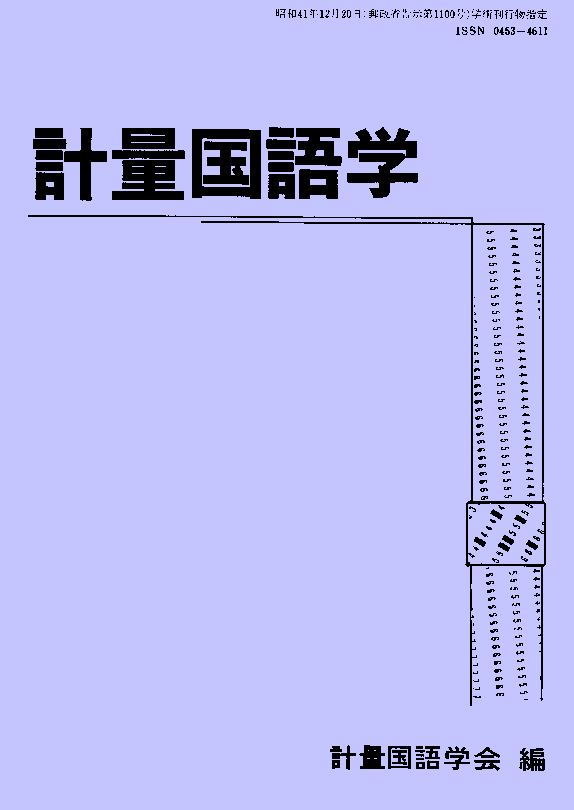All issues

Volume 29, Issue 8
Displaying 1-2 of 2 articles from this issue
- |<
- <
- 1
- >
- >|
Paper
-
In a Case of Verb and Function WordsNaoki NakamataArticle type: Paper
2015Volume 29Issue 8 Pages 275-295
Published: March 19, 2015
Released on J-STAGE: May 01, 2024
JOURNAL OPEN ACCESSThe aim of this paper is to propose a new way of quantifying the productivity of 103 functional words taught in a Basic Japanese Course. To measure productivity beyond large differences between token-frequency of items, seven candidate measures are prepared. Then, 103 items in BCCWJ are calculated for every 7 indexes. After that, the candidates were evaluated from several perspectives. As a result, the formula equivalent to Guiraud Index is the most suitable: Type divided by square root of Token. And the results are consistent with the preceding insights regarding the descriptive grammar of Japanese. High-productive items mainly correspond to time; since they involve no constraint on verb meanings, they can collocate with any verbs. Low-productive items, in contrast, contain a lot of markers for asking, proposal, and prohibition, as well as honorifics. These all are used more in oral communication than in written words. Finally it is claimed that this new index can contribute to education of Japanese language, because we can know which items can co-occur with many verbs or situation and which not, which is necessary information for Japanese Language Education.View full abstractDownload PDF (4473K)
Note
-
On the Data of Murakami and Imanishi(1999)Yohei OnoArticle type: Note
2015Volume 29Issue 8 Pages 296-312
Published: March 19, 2015
Released on J-STAGE: May 01, 2024
JOURNAL OPEN ACCESSThe main objective of this paper is to reconsider the work of Murakami and Imanishi(1999) about “the Tale of Genji ”. In Murakami and Imanishi(1999), they divided “the Tale of Genji ” into four groups and led the suggestive results on how “the Tale of Genji” was written, based on the plot of Hayashi's Quantification Method Ⅲ . However, applying cluster analysis to their plot, the present author cannot obtain the same result as dendrogram. Therefore, utilizing variance stabilizing transformation to their data and applying cluster analysis to those, the obtained dendrogram indicates that this result is consistent with the previous studies and more careful with respect to statistics. For future research, combining philological knowledge and statistical approach, those complementary researches will matter.View full abstractDownload PDF (3414K)
- |<
- <
- 1
- >
- >|